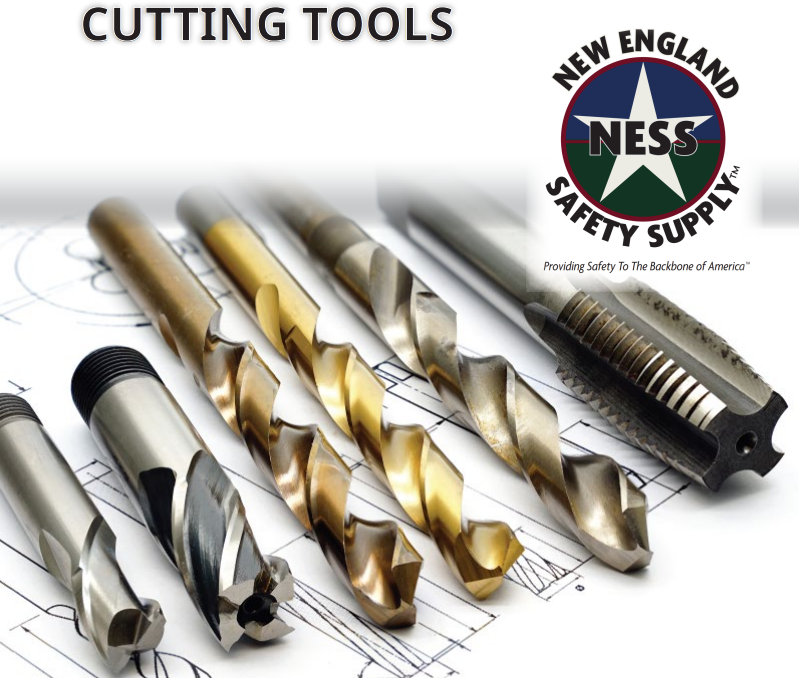The Significance of High-Speed Steel (HSS)
In the world of machining, where precision, speed, and durability are paramount, the choice of tool steel can make all the difference. High-Speed Steel (HSS) stands as one of the most enduring and versatile materials in the toolkit of machinists, metalworkers, and toolmakers. With a rich history dating back over a century, HSS has continually evolved to meet the ever-growing demands of modern industry.
The Versatility of HSS Tool Steels
HSS tool steels have earned their reputation for exceptional hardness, wear resistance, and heat resistance. They are the unsung heroes behind the precision cuts in your favorite woodworking project, the finely threaded bolts in your machinery, and the intricate designs on a metal sculpture. This comprehensive guide will delve into the world of different HSS tool steels, exploring their unique characteristics, applications, and the art of choosing the right steel for the job.
What is High-Speed Steel (HSS)?
Origins and History
The origins of HSS can be traced back to the early 20th century when metallurgists sought to develop steel alloys that could withstand the extreme temperatures and high cutting speeds demanded by industrial machining processes. HSS was the result of this quest for excellence. It was initially known as "self-hardening steel" due to its ability to maintain hardness at elevated temperatures.
Key Properties of HSS
HSS possesses several key properties that make it an ideal choice for cutting tools:
-
Hardness: HSS maintains its hardness even at high operating temperatures, which is crucial for cutting and machining.
-
Wear Resistance: It has excellent wear resistance, reducing the need for frequent tool changes.
-
Heat Resistance: HSS can operate at temperatures well above those at which carbon steels lose their hardness.
-
Toughness: It combines hardness with toughness, allowing HSS tools to withstand shock and impact without breaking.
-
Edge Retention: HSS tools hold their cutting edge for extended periods, resulting in consistent performance.
-
Versatility: HSS can be used for a wide range of cutting and machining applications, including metals, wood, plastics, and composites.
Common Types of HSS Tool Steels
There are several common types of HSS tool steels, each with its unique composition and properties. Let's explore some of the most widely used varieties:
M2 High-Speed Steel
Composition and Characteristics: M2 is perhaps the most recognized HSS tool steel. It contains a high percentage of tungsten, molybdenum, and vanadium, giving it excellent wear resistance, red hardness (the ability to maintain hardness at high temperatures), and toughness.
Applications of M2 HSS: M2 is commonly used for drills, end mills, reamers, and other cutting tools for machining a wide range of materials, including stainless steel, cast iron, and non-ferrous metals.
Advantages and Limitations: M2 HSS offers outstanding performance in terms of cutting speed and tool life. However, it may not be suitable for extremely high-heat applications, where specialized steels like M42 or M4 might be preferred.
M42 High-Speed Steel
Composition and Characteristics: M42 contains a higher percentage of cobalt compared to M2, enhancing its heat resistance and wear resistance. It's often referred to as "cobalt high-speed steel."
Applications of M42 HSS: M42 is well-suited for machining materials that generate high heat during cutting, such as stainless steels, heat-resistant alloys, and aerospace materials.
Advantages and Limitations: M42 excels in applications where high-speed cutting is necessary. However, it can be more brittle than some other HSS varieties.
M35 High-Speed Steel
Composition and Characteristics: M35 contains added cobalt, contributing to its exceptional heat resistance and hardness. It's known for its toughness and red hardness.
Applications of M35 HSS: M35 is often used for drills, taps, and milling cutters, especially when working with hard and abrasive materials like hardened steel, cast iron, and titanium.
Advantages and Limitations: M35 offers excellent performance in high-heat applications, making it a top choice for demanding machining tasks. However, it may be less wear-resistant than M42 in certain applications.
T15 High-Speed Steel
Composition and Characteristics: T15, also known as "Super Hard Steel," contains a substantial amount of tungsten and cobalt. This combination provides exceptional wear resistance and hardness.
Applications of T15 HSS: T15 is primarily used for high-speed cutting tools, such as drills and milling cutters, when machining hard and abrasive materials like hardened steel, stainless steel, and titanium.
Advantages and Limitations: T15 is renowned for its ability to maintain a sharp cutting edge, even under extreme heat and wear conditions. However, it can be more brittle than other HSS types.
M4 High-Speed Steel
Composition and Characteristics: M4 combines high tungsten and molybdenum content with added vanadium and cobalt. This results in superior wear resistance, red hardness, and toughness.
Applications of M4 HSS: M4 is a go-to choice for high-performance cutting tools used in demanding applications like aerospace, automotive, and mold-making. It's suitable for machining hard and abrasive materials.
Advantages and Limitations: M4 offers exceptional tool life and reliability in high-heat, high-wear situations. However, its cost is relatively higher compared to other HSS types.
Each of these HSS tool steels has its unique strengths and advantages, making them well-suited for specific applications. The choice of steel depends on factors like the material being machined, cutting conditions, and desired tool life.
M2 High-Speed Steel
Composition and Characteristics
M2 High-Speed Steel, also known as "W6Mo5Cr4V2," is one of the most widely used and recognized HSS tool steels. Its composition includes:
- Carbon (C): 0.78-0.88%
- Manganese (Mn): 0.20-0.40%
- Silicon (Si): 0.20-0.45%
- Chromium (Cr): 3.75-4.50%
- Vanadium (V): 1.75-2.20%
- Molybdenum (Mo): 4.50-5.50%
- Tungsten (W): 5.50-6.75%
These elements contribute to its exceptional wear resistance, red hardness (the ability to maintain hardness at high temperatures), and toughness.
Applications of M2 HSS
M2 HSS finds applications in a wide range of cutting tools and machining processes, including:
- Drills: M2 drills offer high-speed cutting and long tool life when used on materials like steel, stainless steel, cast iron, and non-ferrous metals.
- End Mills: M2 end mills are versatile tools used for milling operations on various materials.
- Reamers: M2 reamers create precision holes with a smooth finish.
- Taps: M2 taps are suitable for threading a variety of materials.
Advantages and Limitations
M2 HSS is favored for its excellent performance in terms of cutting speed and tool life. It delivers exceptional results across various applications, making it a reliable choice for many machinists and manufacturers. However, M2 may not be the best choice for extremely high-heat applications where specialized steels like M42 or M4 might be preferred.
M42 High-Speed Steel
Composition and Characteristics
M42 High-Speed Steel, often referred to as "cobalt high-speed steel," is recognized for its enhanced heat resistance and wear resistance. Its composition includes:
- Carbon (C): 1.05-1.15%
- Manganese (Mn): 0.15-0.40%
- Silicon (Si): 0.15-0.65%
- Chromium (Cr): 3.50-4.25%
- Vanadium (V): 1.15-1.85%
- Molybdenum (Mo): 9.00-10.00%
- Cobalt (Co): 7.75-8.75%
The higher cobalt content distinguishes M42 from other HSS varieties and contributes to its exceptional heat resistance and hardness.
Applications of M42 HSS
M42 is often chosen for applications where high cutting speeds and prolonged tool life are essential. Its primary applications include:
- Drills: M42 drills excel in drilling stainless steel, heat-resistant alloys, and aerospace materials.
- Taps: M42 taps are suitable for threading challenging materials, offering extended tool life.
- Milling Cutters: M42 milling cutters are used for high-speed milling of hardened steels and other tough alloys.
- Saw Blades: M42 is a common material for high-performance saw blades used in metal cutting.
Advantages and Limitations
M42 HSS is well-suited for applications that generate high heat during cutting. It maintains its cutting edge under extreme conditions, making it a top choice for demanding machining tasks. However, it can be more brittle than some other HSS varieties, which should be considered in applications where impact resistance is crucial.
M35 High-Speed Steel
Composition and Characteristics
M35 High-Speed Steel boasts superior heat resistance and hardness. Its composition includes:
- Carbon (C): 0.92-1.05%
- Manganese (Mn): 0.15-0.40%
- Silicon (Si): 0.15-0.65%
- Chromium (Cr): 3.80-4.40%
- Vanadium (V): 1.70-2.10%
- Molybdenum (Mo): 4.50-5.50%
- Cobalt (Co): 4.50-5.50%
The addition of cobalt contributes to its impressive red hardness and wear resistance.
Applications of M35 HSS
M35 is commonly chosen for its toughness and durability in a variety of applications, including:
- Drills: M35 drills are effective in drilling stainless steel, high-temperature alloys, and other hard materials.
- Taps: M35 taps are suitable for threading materials that generate heat during machining.
- Milling Cutters: M35 milling cutters are used for high-speed milling of tough alloys.
- Broaches: M35 broaches are employed in applications requiring precision cutting of hard materials.
Advantages and Limitations
M35 HSS offers excellent performance in high-heat applications, making it a reliable choice for demanding machining tasks. Its toughness and durability contribute to prolonged tool life. However, it may be less wear-resistant than M42 in certain applications, so the choice between the two should be based on specific machining requirements.
T15 High-Speed Steel
Composition and Characteristics
T15 High-Speed Steel, often referred to as "Super Hard Steel," is renowned for its exceptional hardness, wear resistance, and red hardness. Its composition includes:
- Carbon (C): 1.25-1.35%
- Manganese (Mn): 0.20-0.45%
- Silicon (Si): 0.20-0.45%
- Chromium (Cr): 4.00-4.75%
- Vanadium (V): 3.75-4.50%
- Molybdenum (Mo): 9.50-10.50%
- Cobalt (Co): 9.50-10.50%
The high vanadium and cobalt content contribute significantly to its remarkable performance.
Applications of T15 HSS
T15 is chosen for applications that demand extreme cutting performance and precision, including:
- Drills: T15 drills are used in high-speed drilling of tough materials, such as hardened steel and exotic alloys.
- Milling Cutters: T15 milling cutters are employed in precision milling operations requiring long tool life.
- Taps: T15 taps excel in threading high-strength and heat-resistant materials.
- Reamers: T15 reamers create precision holes in challenging materials.
Advantages and Limitations
T15 HSS is ideal for high-speed cutting in demanding applications. Its ability to maintain a sharp cutting edge, even under extreme heat and wear conditions, makes it a top choice for machining tough materials. However, it can be more brittle than other HSS types, so careful handling and machining practices are crucial.
M4 High-Speed Steel
Composition and Characteristics
M4 High-Speed Steel combines high tungsten and molybdenum content with added vanadium and cobalt. Its composition includes:
- Carbon (C): 1.20-1.30%
- Manganese (Mn): 0.15-0.40%
- Silicon (Si): 0.15-0.65%
- Chromium (Cr): 3.75-4.50%
- Vanadium (V): 3.75-4.50%
- Molybdenum (Mo): 4.25-5.75%
- Cobalt (Co): 4.50-5.50%
These elements combine to provide M4 with exceptional wear resistance, red hardness, and toughness.
Applications of M4 HSS
M4 is a preferred choice for high-performance cutting tools used in demanding applications, including:
- Aerospace: M4 is employed in machining aerospace materials like titanium, superalloys, and high-strength steels.
- Automotive: It's used for machining hardened and heat-treated steels in automotive manufacturing.
- Mold-Making: M4 is favored for precision mold-making due to its ability to maintain a sharp edge during extended machining.
- Tool and Die: M4 is used in the production of precision tools and dies for various industries.
Advantages and Limitations
M4 HSS offers exceptional tool life and reliability in high-heat, high-wear situations. Its unique combination of properties makes it a top choice for challenging machining tasks. However, its cost is relatively higher compared to other HSS types, which should be considered in the context of the specific application.
Each of these HSS tool steels serves distinct purposes and excels in specific machining scenarios. Selecting the right HSS steel for a given application involves considering factors such as material type, cutting conditions, and desired tool life. Ultimately, the choice should align with the specific requirements of the task at hand.
Choosing the Right HSS Tool Steel
Selecting the appropriate HSS tool steel is crucial for achieving the best results in machining operations. Here are some essential factors to consider when making your choice:
Material Compatibility: The type of material you'll be machining is a primary consideration. Different HSS steels excel in specific material categories, such as stainless steel, hardened steel, aluminum, or heat-resistant alloys.
Cutting Conditions: Consider the cutting conditions, including cutting speed, feed rate, and depth of cut. Some HSS steels are better suited for high-speed cutting, while others are designed for heavy-duty machining.
Tool Geometry: The geometry of the cutting tool, including the rake angle and relief angle, can impact tool performance. Ensure the chosen HSS steel complements the tool's design.
Heat Resistance: Evaluate the heat resistance requirements of your application. Some materials generate significant heat during machining, necessitating HSS steels with exceptional red hardness.
Tool Life Expectations: Determine the expected tool life needed for your project. Longer tool life may justify the use of a higher-cost HSS steel.
Cost Considerations: HSS tool steels vary in cost, with some premium varieties commanding higher prices. Balance the performance benefits against the project budget.
Heat Treatment: Understanding the heat treatment requirements and processes for your chosen HSS steel is essential. Proper heat treatment can enhance performance and extend tool life.
Matching the Steel to the Application:
- M2 HSS is a versatile choice suitable for a wide range of materials and applications where high-speed cutting is essential.
- M42 HSS shines in high-heat applications, making it ideal for tough materials like stainless steel and heat-resistant alloys.
- M35 HSS combines toughness and durability, making it a dependable choice for various materials.
- T15 HSS excels in precision cutting tasks demanding extreme hardness and wear resistance.
- M4 HSS offers exceptional tool life and reliability in high-heat, high-wear scenarios.
Importance of Heat Treatment: Proper heat treatment is crucial for achieving the desired hardness and toughness in HSS tool steels. It can significantly impact tool performance, so it's essential to follow manufacturer recommendations or consult with experts in heat treatment processes.
In summary, the choice of HSS tool steel should align with the specific demands of your machining application. Take into account the material, cutting conditions, tool design, expected tool life, and budget constraints when making your decision.
Maintaining and Sharpening HSS Tools
Maintaining and sharpening HSS tools are vital practices to extend their lifespan and ensure optimal performance. Here are some key guidelines:
Proper Storage and Handling:
- Store HSS tools in a dry, clean environment to prevent rust and corrosion.
- Use protective caps or covers to shield the cutting edges from damage.
- Handle HSS tools with care to avoid chipping or breaking the cutting edges.
Sharpening Techniques:
- Sharpen HSS tools using sharpening stones or grinding wheels designed for high-speed steels.
- Maintain the original geometry of the cutting edge when sharpening.
- Use the appropriate sharpening angles for the tool type (e.g., drills, end mills, or lathe tools).
Extending the Life of HSS Tools:
- Use cutting fluids or lubricants to reduce friction and heat during machining, which can prolong tool life.
- Monitor tool wear and replace or sharpen HSS tools when necessary to prevent poor machining results.
- Follow manufacturer recommendations for regrinding angles and clearances during sharpening.
By following these maintenance and sharpening practices, you can ensure that your HSS tools remain reliable and deliver consistent performance over their lifespan.
Innovations in HSS Technology
The world of HSS tool steels continues to evolve, driven by advancements in materials science and manufacturing processes. Here are some notable innovations in HSS technology:
Advances in Coatings: Coating technologies have improved the wear resistance and performance of HSS tools. Various coatings, such as TiN (Titanium Nitride), TiCN (Titanium Carbonitride), and TiAlN (Titanium Aluminum Nitride), enhance tool life and reduce friction.
Powder Metallurgy HSS: Powder metallurgy techniques have enabled the development of high-performance HSS with exceptional wear resistance and toughness. These advanced materials are well-suited for demanding machining applications.
Custom HSS Alloys: Manufacturers are continually developing custom HSS alloys tailored to specific industries and applications. These alloys are designed to provide optimal performance in niche markets, such as aerospace, automotive, and medical device manufacturing.
Staying informed about these innovations can help machinists and manufacturers make informed decisions when selecting HSS tool steels for their projects. The right choice of HSS steel, coupled with cutting-edge technology, can result in increased productivity and precision.
High-Speed Steel (HSS) tool steels have stood the test of time as indispensable materials in the world of machining and manufacturing. From the enduring M2 to the specialized M42, M35, T15, and M4, each HSS variety offers unique properties and advantages, making them suitable for specific applications and cutting conditions.
The art of choosing the right HSS tool steel lies in understanding the demands of your machining project, considering factors like material type, cutting conditions, and tool life expectations. Proper maintenance, handling, and sharpening techniques are essential to maximize the lifespan and performance of HSS tools.
As technology continues to advance, innovations in coatings, powder metallurgy, and custom alloys further enhance the capabilities of HSS tool steels. These innovations ensure that HSS remains at the forefront of precision machining, delivering the durability, reliability, and versatility required by modern industries.
In the ever-evolving landscape of tool materials, HSS tool steels remain a timeless choice for those who seek excellence in machining and manufacturing. Their legacy continues to shape the world of precision engineering, enabling the creation of intricate components and the realization of innovative designs.
 (508) 492-8975
(508) 492-8975








